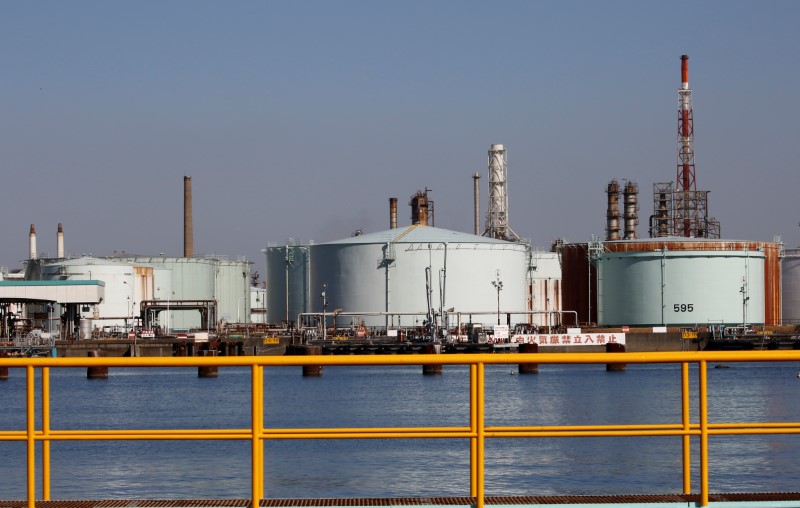(Bloomberg) -- Oil climbed as the U.S. and China were said to near a deal on trade that would underpin the outlook for crude demand, while supplies around the world showed signs of tightening.
Futures in New York rose as much as 1.1 percent after a drop of 2.6 percent last week. The world’s two biggest economies are approaching an accord that could lift most or all U.S. tariffs, according to people familiar with the talks. Prices were also supported by Baker Hughes data that showed working oil rigs in America fell to the lowest level since May, while OPEC output declined again.
Oil has rallied about 24 percent this year as the Organization of the Petroleum Exporting Countries and its allies -- known as OPEC+ -- cut production while American sanctions on Venezuela and Iran restrict supplies further.
“Growing compliance with the OPEC+ deal and slowing rig count in the U.S. should remain fairly supportive for the oil market,” said Warren Patterson, senior commodities strategist at ING Bank NV.
West Texas Intermediate for April delivery rose as much as 62 cents to $56.42 a barrel on the New York Mercantile Exchange, and traded at $56.26 as of 1:20 p.m. London time. Prices fell last week following weaker-than-expected reports on U.S. factory orders and consumer sentiment.
Brent for May settlement was at $65.84 a barrel, up 77 cents, on the London-based ICE Futures Europe exchange. The global benchmark crude’s premium over WTI for the same month widened to $8.94.
The drop in American oil rigs, by 10 to 843 last week, came as explorers were chastened by a near 40 percent collapse in prices late last year. In the Permian, the nation’s largest shale play, rigs fell by seven to 466, also the lowest since May.
Nabors Industries Ltd., the world’s largest owner of land drilling rigs, said customers accounting for more than a third of the machines deployed across the U.S. plan to trim activity by about 3 percent this year.
OPEC Output
OPEC’s production slumped last month as key members Saudi Arabia, Kuwait and the United Arab Emirates delivered all -- and in some cases more -- of the cuts they had pledged under a deal between the group and its partners. Non-member Russia pumped the equivalent of 11.336 million barrels a day, down 82,000 barrels a day from the October baseline, Bloomberg calculations show.
“There continues to be very strong support for oil prices on the back of OPEC reducing their production,” said Howie Lee, a Singapore-based economist at Oversea-Chinese Banking Corp. “Also, if the U.S. and China manage to resolve their key differences, then we can raise the oil demand a few notches. I think there is hope.”
Substantial progress has been made in talks with the U.S., a spokesman for China’s National People’s Congress said before legislative meetings this week. People familiar with the discussions earlier said a deal is likely as long as Beijing sticks to pledges ranging from protecting intellectual property to buying U.S. products.

